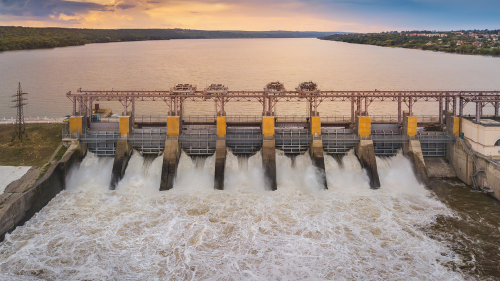Idaho and Pacific Northwest National Labs join Idaho Power in evaluating potential to create hydrogen at hydropower plants

Idaho Power, Idaho National Laboratory and Pacific Northwest National Laboratory have partnered on a new effort to determine if existing hydropower plants could integrate with hydrogen generation as a means of energy storage, downstream improvements and decarbonization.
Unlike many other forms of renewable energy, hydropower’s advantage has always been its consistency of output. Adding hydrogen production to the mix, the partners concluded, would help to balance out those other generation forms and increase flexibility on the system, particularly during hours of peak demand. Further, storing said hydrogen would allow a cleaner alternative to fossil-fuel backups.
“By capturing the off-peak energy production as hydrogen, the hydrogen can be re-electrified during peak energy demand,” INL’s Daniel Wendt, principal investigator and researcher on the project, said.
Excess oxygen produced as a byproduct of hydrogen generation could also aid water quality efforts, by reoxygenating water in rivers with hydropower plants. Reservoirs behind dams sometimes face low levels of dissolved oxygen, particularly in the summer and early fall, but dissolved oxygen is needed for fish and other aquatic species to thrive. According to Brett Dumas, Idaho Power’s director of environmental affairs, the company has already seen results from adding oxygen from the Brownlee Dam into the water flowing from it.
Data, models and analyses will be developed over the course of the project, and potentially buoy hydropower and hydrogen integration efforts nationwide. For Idaho Power, though, the efforts could have a more practical effect, from the improved rivers to helping it chart a path to more clean energy in its portfolio, all through the use of 17 already existing hydroelectric power plants.
“INL and PNNL will evaluate the coupling of electrolytic hydrogen production technologies with hydropower plants to identify scenarios that could help Idaho Power achieve its goal of providing 100% clean energy by 2045,” Dumas said.
Along the way, researchers will use a Department of Energy software tool known as Hydrogen Analysis to perform screening studies of the most promising electrolysis technologies and hydrogen use cases, evaluating hydrogen production and usage at large. Separately, the Hydrogen Energy Storage Evaluation Tool will be paired with data analysis to model and optimize the hydrogen production system.
